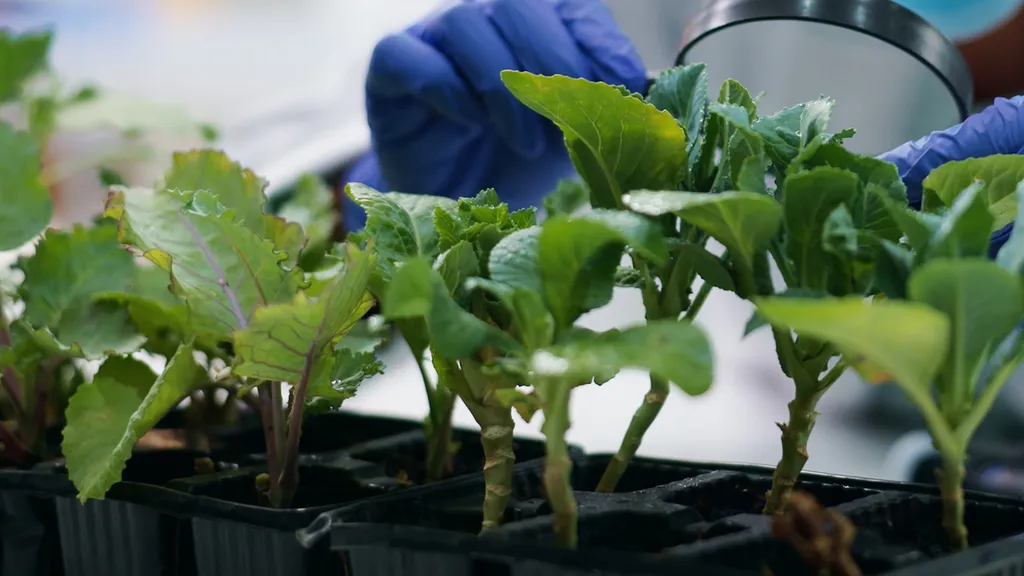In the heart of Yunnan Province, China, a silent battle is raging in pea fields, one that threatens the yield and quality of leguminous crops. The culprit? Pea seed-borne mosaic virus (PSbMV), a pathogen that has emerged as the dominant viral threat to legume cultivation in the region. Recent research, published in *Phytopathology Research*, sheds light on the molecular characterization of PSbMV and the RNA silencing suppression mechanism of its helper component-protease (HC-Pro), offering hope for future mitigation strategies.
The study, led by Junfeng Ma from the State Key Laboratory of Agricultural and Forestry Biosecurity at Fujian Agriculture and Forestry University, presents the complete genome sequence of a Chinese isolate of PSbMV, designated PSbMV-YN. The genome, clocking in at 9,919 nucleotides, was obtained through a combination of segmented amplification and rapid amplification of cDNA ends (RACE). Phylogenomic analysis revealed that PSbMV-YN clusters within the P1 pathotype clade, a finding that has significant implications for pea cultivation in Yunnan.
One of the most compelling aspects of this research is the genetic mapping of local pea varieties, which identified eIF4E, a gene tightly linked to the sbm1 locus, as the susceptibility genotype. This discovery provides a mechanistic basis for the prevalence of the P1 pathotype in Yunnan pea populations. “Understanding the genetic basis of susceptibility is the first step towards developing resistant varieties,” Ma explained. This insight could pave the way for breeding programs aimed at enhancing pea resistance to PSbMV, a development that would be warmly welcomed by farmers and the agriculture sector alike.
The study also delved into the highly variable region of the P1 cistron in PSbMV-YN, classifying the P1 protein as Type A, which generally lacks RNA silencing suppressor activity. However, the research team went a step further, validating the RNA silencing suppressor activity of HC-Pro in both Nicotiana benthamiana and the natural host, Pisum sativum L., using a GFP suppression assay. This finding is crucial, as RNA silencing is a key defense mechanism in plants against viral infections.
Moreover, immunoprecipitation sequencing (IP-seq) revealed that HC-Pro binds to small RNAs of variable lengths, effectively inhibiting both local and systemic RNA silencing. This suppression promotes viral infection, highlighting HC-Pro as a potential target for antiviral strategies. “By understanding how HC-Pro manipulates the host’s RNA silencing machinery, we can develop more targeted and effective control measures,” Ma noted.
The commercial impacts of this research are substantial. PSbMV poses a significant threat to legume cultivation, affecting both yield and quality. The insights gained from this study could lead to the development of resistant pea varieties and targeted antiviral strategies, ultimately benefiting farmers and the agriculture sector. Furthermore, the genomic sequence of PSbMV-YN reported in this study serves as a valuable resource for future research, shaping the trajectory of the field.
As we look to the future, this research opens up new avenues for exploring the interactions between viruses and their hosts. By unraveling the molecular mechanisms underlying viral infection and host defense, we can develop more effective strategies for controlling plant viruses, ensuring food security, and promoting sustainable agriculture. The battle against PSbMV is far from over, but with each new discovery, we move one step closer to victory.

